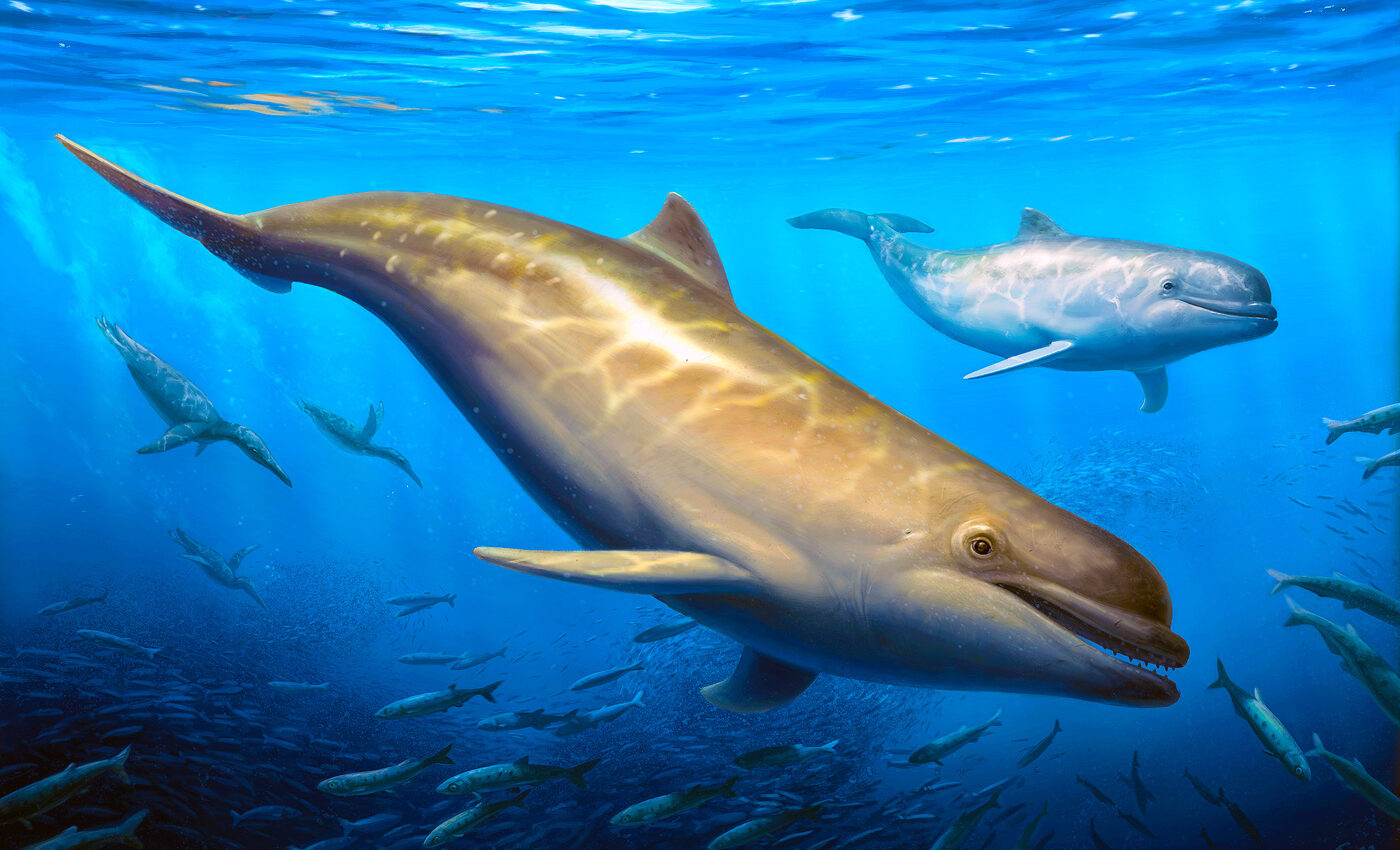
Newly-discovered species of toothed whale is the earliest ancestor of modern dolphins
For those curious about the origins of modern-day dolphins, researchers have unveiled a fascinating new species of toothed whale. The Olympicetus thalassodon, an early form of toothed whale, or odontocete, swam along the North Pacific coastline about 28 million years ago.
This new discovery is another significant piece in the evolutionary puzzle. It sheds light on the early evolution and diversity of contemporary dolphins, porpoises, and other toothed whales.
The principal investigator in this study was Jorge Velez-Juarbe. He is a noted paleontologist from Puerto Rico. Jorge is also an Associate Curator of Marine Mammals at the Natural History Museum of Los Angeles County.
Dr. Velez-Juarbe explains, “Olympicetus thalassodon and its close relatives show a combination of features that truly sets them apart from any other group of toothed whales. Some of these characteristics, like the multi-cusped teeth, symmetric skulls, and forward position of the nostrils make them look more like an intermediate between archaic whales and the dolphins we are more familiar with.”
This study discovered other toothed whale species
Interestingly, the study described Olympicetus thalassodon and other odontocetes as well. The researchers identified two additional closely related species from the same fossil collection.
These were found in a geologic formation known as the Pysht Formation. This formation is located along the Olympic Peninsula coastline in Washington State. It dates back to between 26.5 to 30.5 million years ago.
The research study further revealed that the Olympicetus and its related species belonged to a unique family of whales known as the Simocetidae. This family, known only from the North Pacific region, is one of the earliest branching groups of toothed whales.
Simocetidae – a very early group of toothed whales
The Simocetidae shared their prehistoric world with an unusual range of fauna. This fauna is represented by fossils found in the Pysht Formation. These include plotopterids (an extinct group of flightless, penguin-like birds), bizarre desmostylians, early relatives of seals and walruses, and toothed baleen whales.
These ancient whales exhibited diversity in body size, teeth, and other feeding-related structures, which suggest that they might have had different methods of acquiring prey and preferred different types of prey.
Dr. Velez-Juarbe adds, “The teeth of Olympicetus are truly weird, they are what we refer to as heterodont, meaning that they show differences along the tooth row. This stands out against the teeth of more advanced odontocetes whose teeth are simpler and tend to look nearly the same.”
Many questions remain unanswered
Despite these discoveries, there are still many unanswered questions regarding these ancient marine creatures. It remains unknown whether these early toothed whales could echolocate. This is a skill their present-day relatives possess.
The team could connect certain skull features to echolocating-related structures, such as a melon. Previous studies suggest that neonatal individuals might not have been able to hear ultrasonic sounds.
These findings have motivated researchers to investigate the earbones of subadult and adult individuals in the future to see if this ability developed with age. This ongoing work continues to reveal the rich history of these fascinating marine mammals.
The scientific report revealing this discovery was published in the open-access journal, PeerJ Life and Environment.
More about toothed whales
Toothed whales, also known as odontocetes, are a subgroup of cetaceans. This group includes over 70 species such as dolphins, porpoises, belugas, narwhals, and sperm whales.
They are defined by the presence of teeth, as their name suggests. They are distinct from baleen whales, which have filter-feeding systems in their mouths instead of teeth.
The lineage that led to today’s toothed whales began around 50 million years ago with the evolution of the first whales, or cetaceans, from even-toed ungulates (artiodactyls). These were a group of mammals that also includes deer, cows, and hippos.
Evolving features better suited for aquatic life
These early cetaceans, like Pakicetus and Ambulocetus, were semi-aquatic and lived in near-shore environments. Over millions of years, these early whales evolved and diversified. They developed features better suited for life in the water and gradually becoming fully aquatic.
Around 40 million years ago, the cetacean lineage split into two groups: the Mysticeti (baleen whales) and the Odontoceti (toothed whales). The toothed whales further diversified into a variety of different forms. Each new form adapted to different marine environments and developed specialized features for hunting and feeding.
Which species was the first to develop echolocation?
One of the distinguishing characteristics of toothed whales is their echolocation ability. Echolocation is the use of sound to locate and identify objects underwater. This adaptation has proven to be invaluable for navigating murky waters and hunting prey.
For instance, dolphins have gained special recognition for their sophisticated echolocation skills. It’s currently unknown when exactly this ability evolved. However, evidence suggests that ancient toothed whales like Squalodon, which lived about 30 million years ago, may have possessed this capability.
Toothed whales come in all shapes and sizes
Throughout their history, toothed whales have shown an impressive range of size and body form. The smallest toothed whale, the vaquita, is only about 5 feet long. At the other end of the spectrum, the sperm whale is the largest. It can reach lengths of over 60 feet.
Some toothed whales, like the now-extinct Livyatan melvillei, had massive teeth for hunting large prey. Others, like the modern beaked whales, have small teeth used for catching squid and fish.
Many species of toothed whales have gone extinct over the millions of years of their existence. Some of these extinct species provide key information about the evolution and history of this group.
For instance, the recent discovery of the Olympicetus thalassodon, an ancient odontocete species from 28 million years ago, has revealed interesting information about the early diversification of toothed whales.
Scientists continue to discover new fossil species that fill in the gaps in our understanding of these remarkable creatures.













